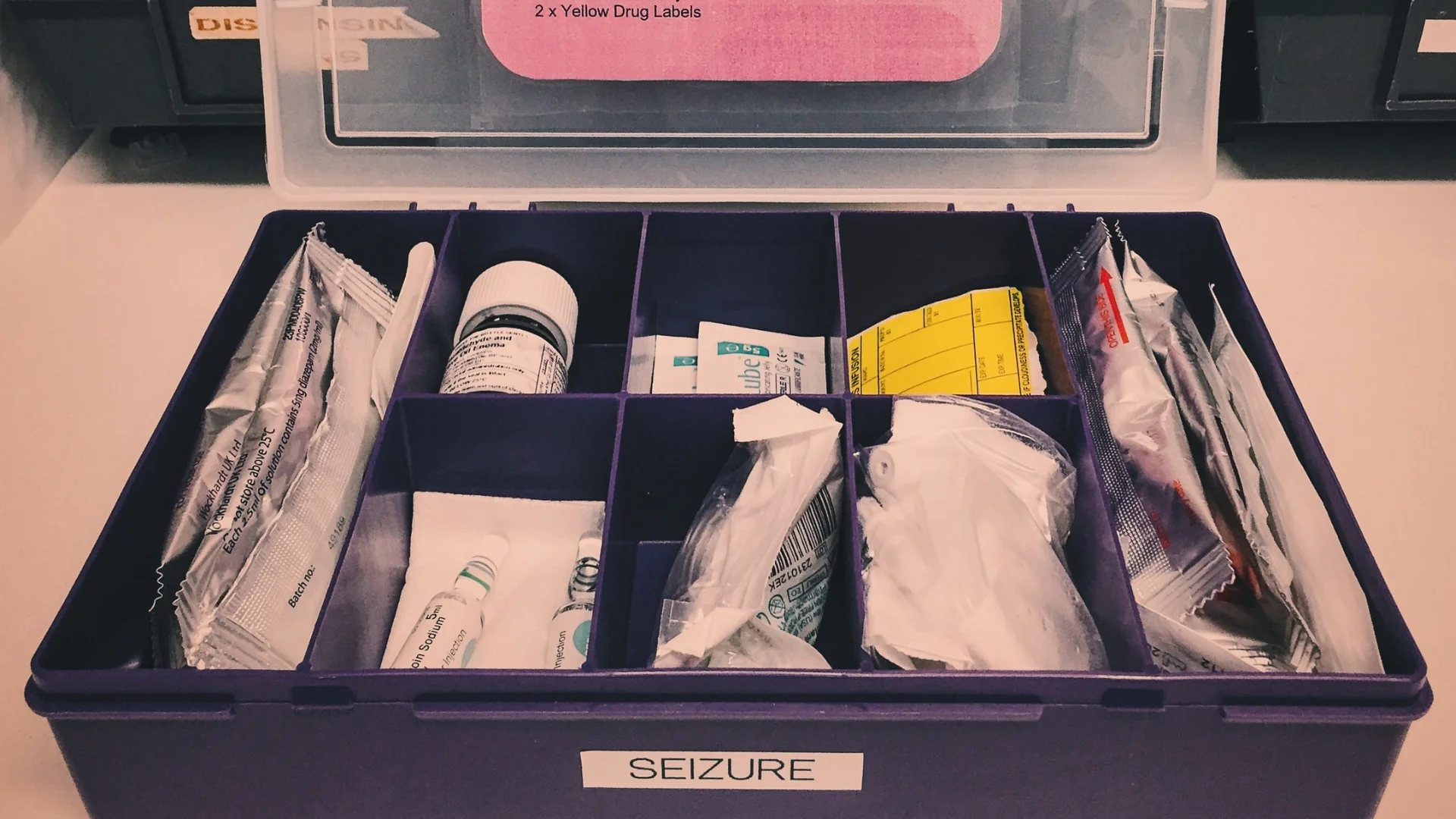#SimBlog: Lateral Thinking
““A 1-year-old is brought in by ambulance after he started fitting at home. Paramedics have given one dose of Diazepam.””
Observations
A – Gurgling
B – RR 6, Sats 70%, no distress
C – HR 170, CRT 3 seconds
D – Fitting, U on AVPU scale, BM 5
E – Temperature 38°C
Clinical Findings
Saturations remain at 80% despite oropharyngeal airway and bag mask ventilation with 15L oxygen.
Respiratory arrest with further benzodiazepine dose.
Full exposure reveals a boggy swelling on the back of the head – underlying diagnosis of an occipital skull fracture with subdural haemorrhage.
Why We Simulated
In essence, the Status Epilepticus algorithm appears a simple flow chart to follow. However, many complications can occur along the way and we wanted our staff to understand this and develop skills in addressing these issues:
1) Problems with history taking
Medical students are taught that 80% of a diagnosis is from the history and 20% the clinical examination. Sometimes though, there are difficulties such as a language barrier or the parent may not be present as the child was at school or they have other children to arrange childcare for. It is also important to remember that sadly sometimes the information you are given by parents may be inconsistent with the clinical picture you are seeing.
Always try and gather as much information as possible from the paramedics. They may have spoken to a parent at the scene or be able to comment on the home situation or environment. The paramedic assessment sheet also holds key information regarding doses of drugs given-sometimes the expected dose is different to that administered. In our scenario, the child had received an excessive dose of diazepam prior to hospital arrival, which had led to respiratory depression. If the child was at school and the episode was witnessed by a staff member, try telephoning the school for an eye witness account.
Where there are inconsistent histories, it is best to raise these issues with your seniors who can initiate safeguarding procedures if necessary. Much of this history taking may have to be taken in retrospect after the acute management of the fitting child.
2) The child has a fever but is not behaving like a 'febrile convulsion'
Coughs, colds and other intercurrent infections are common in children. Although atypical febrile convulsions may present with status epilepticus, it is always important to keep a broad differential in the fitting, feverish child. In this case, the child did have a viral illness but had also fallen down a flight of stairs sustaining an occipital skull fracture with subdural haematoma, which was the cause of the fitting.
3) The child has a respiratory arrest post benzodiazepine and the anaesthetist has not arrived
Within our ED we have Standard Operating Procedures for the Critically Unwell Child, enabling rapid escalation and anaesthetic support as required. However, there are sometimes situations when that support does not arrive as expected or circumstances change in the interim. In these instances, we want to prepare our staff to be assertive in vocalising their concerns and also think laterally in terms of sourcing another individual with the required skills.
The ED is a large department and often we forget there may be an ED physician with skills in paediatric anaesthesia who is available to help. Liaising with the Doctor in Charge will help in identifying such individuals.
We recommend the PACE graded assertiveness acronym as an example of how to vocalise clinical concerns.
Further Reading:
- Medscape: Comparative value of Clinical Information in Making a Diagnosis
- Life In The Fastlane: Communication in a Crisis
- #EM3 Paeds Sim Blog: View our previous Afebrile Seizure Sim for more information on management of the fitting child
Positive Feedback
A calm atmosphere was maintained throughout the simulation scenario.
Clear articulation between team members allowing for forward planning with drug preparation.
Escalated concerns appropriately.
Learning Outcomes
Full exposure is vital when assessing the patient to ensure you have not overlooked any differential diagnosis.
Plan for the 'What if the specialist I want doesn't come?' scenario. Think laterally about what skills mix you have in your wider ED and contact the Doctor in Charge to help identify individuals with specialist skills. For example if anaesthetic support is needed and has not arrived, there may be a ED physician with paediatric pre hospital care or anaesthetic training who can help in the interim.
Use graded assertiveness communication skills to highlight to your team any clinical concerns you have – the acronym PACE is a useful tool in vocalising this.







